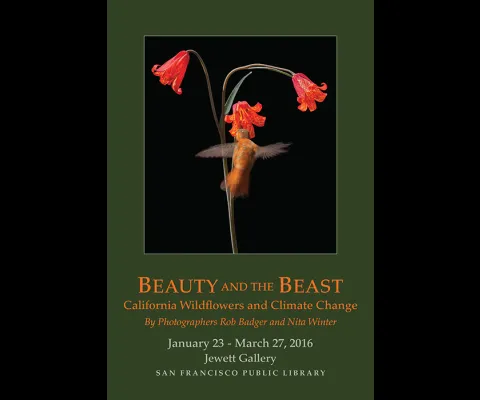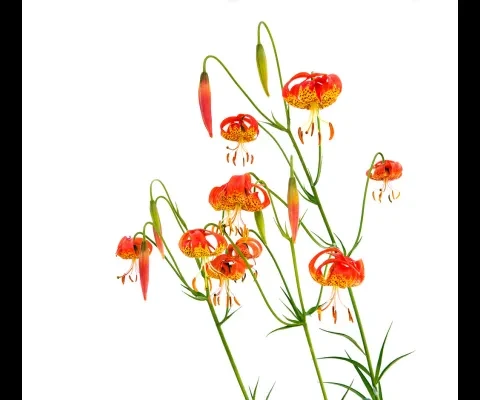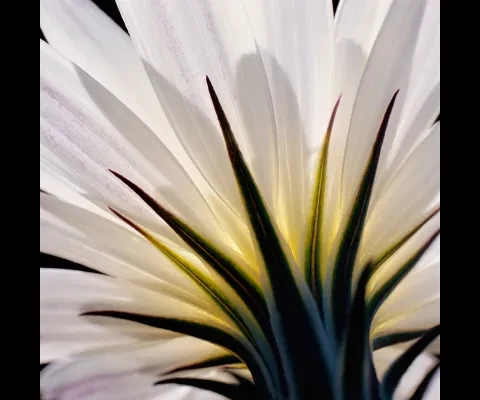Exhibition: Beauty and the Beast: California Wildflowers and Climate Change - A 17 Year Journey Documenting Our State's Vanishing Beauty Photographs by Rob Badger and Nita Winter San Francisco Public Library, Jewett Gallery January 23—March 27, 2016
In 1992, conservation photographer Rob Badger first experienced the rare and spectacular display of California wildflowers in the Antelope Valley California Poppy Reserve, a California State Park in the Mojave Desert. Not wanting his partner and fellow photographer Nita Winter to miss what he was seeing, he quickly returned to San Francisco to get her, and drove back to the desert so he could enjoy and photograph this beauty together. Years later, the 1997-98 El Niño rains produced an unexpected “100 Year Bloom” that inspired Rob and Nita to begin their 17-year documentary art project, “Beauty and the Beast: Wildflowers and Climate Change.” The project is a visual story about the diverse and delicately-balanced ecosystems supporting spectacular explosions of color on our public lands. These protected habitats are being altered by climatic conditions alien to their region, and invaded and replaced by both non-local and non-native species.
California Leopard Lilies (Lilium pardalinum), Mount Tamalpais State Park, Marin County, California (c)Rob Badger and Nita Winter[/caption] A part of this work is currently on display in San Francisco Main Library’s Jewett Gallery, 100 Larkin St., San Francisco, through March 27. The artists have selected 100 exquisite fine art photographs from their collection. The photos include wildflower landscapes from below sea level in Death Valley National Park to the high, alpine rock gardens above 11,000 feet in the Sierra Nevada Mountains, as well as intimate wildflower portraits, some exclusive to the Bay Area, like the exotic Tiburon Mariposa Lily found only on Ring Mountain in Marin County. But in addition to displaying the beauty of these places, this exhibit also gives visitors information about how climate change and increasing habitat loss are threatening Nature’s fragile native plant communities and species. “100 Year Blooms” are now happening much more frequently than once a century. This may be evidence that climate patterns are changing. New and alien weather patterns threaten future gorgeous displays of nature, as invasive species take advantage of abundant rains and crowd out native plants. Despite being "protected," wildflower habitats are being altered by irreversible climatic conditions alien to their region. As wildflowers disappear, many animals, birds and insects that depend on them do as well. The educational aspect of the exhibit aims to inspire personal action to reduce the impacts of climate change, protect what remains of the natural world, and reduce habitat loss. Exhibit hours are: Mondays 10-5:30, Tuesdays through Thursdays 9-7:30, Fridays 12-5:30, Saturdays 10-5:30 and Sundays 12-4:30. All programs at the library are free. Find more information here.
Desert Chicory (Rafinesquia neomexicana). Abundant El Nino rains create profuse wildflower bloom in Anza-Borrego Desert State Park, California, USA during "100 Year Bloom" (c)Rob Badger and Nita Winter[/caption]


